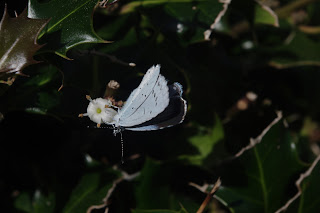An old photo circa 2019 of a good haul of plants purchased at the Plant Fairs Roadshow when it made its annual visit to my neighbourhood. So I was sorry to hear of the retirement of Colin and Cindy Moat who ran Pineview Plants for 25 years and were a mainstay of the Roadshow. Originally featuring nurseries from the counties south of London the 'tour' has steadily increased its range both in the participants and the venues.
I moved to New Cross Gate back in 2010. I started out as a gardener and landscape gardener but by then I was working mainly in the art world after a stint at art school. The flat has quite a sizeable garden which had become overgrown so I thought I'd tidy it up a bit. Then I thought I'd do a bit of planting. I quickly became a plantaholic, more so than when I was working in the 'trade' in fact.
I soon became frustrated by the limited choice in garden centres. I began to order from admirable institutions like the Beth Chatto nursery and I started going to plant sales at places like the RHS halls in Victoria. Therefore I was delighted when I discovered that something called the Plant Fairs Roadshow was coming to the community centre at the top of the road. That was about a decade ago and over the years I've also caught up with it at various other locations in and around London. I've always been impressed by the dedication of these niche nurseries and the quality (and good value) of the plants. Some have been doing great work for a long time; equally encouraging is the emergence of new growers.
Pineview Plants will be missed but as they say in showbiz: always leave 'em wanting more...































